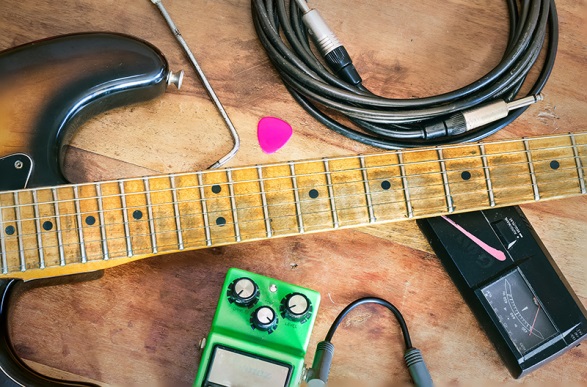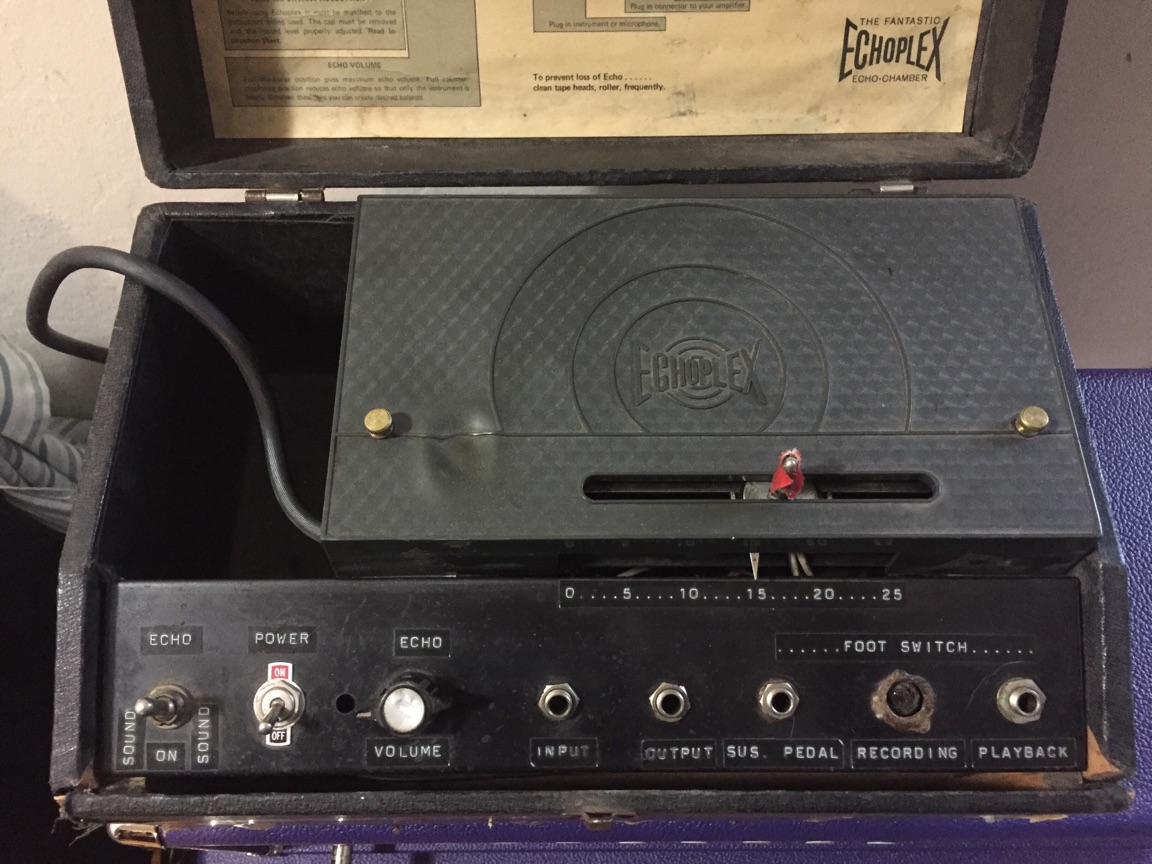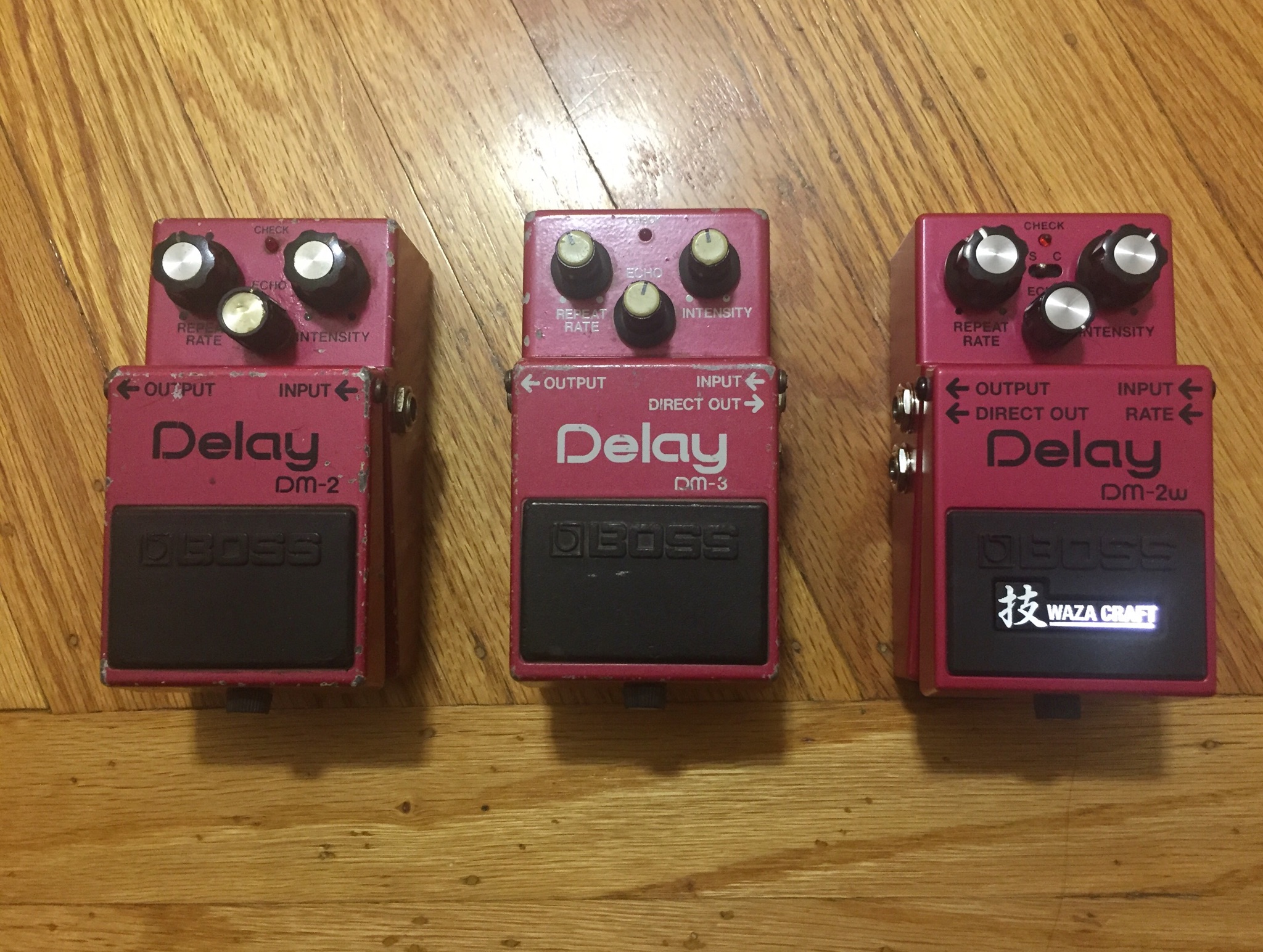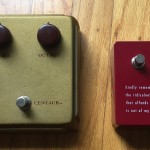 We’d like to introduce and welcome a guest blog from Natalie over at MusicalAdvisors.com. She has some tips to offer for those interested in using guitar effects. Consider these a good starting point for readers looking for introductory advice – DS
We’d like to introduce and welcome a guest blog from Natalie over at MusicalAdvisors.com. She has some tips to offer for those interested in using guitar effects. Consider these a good starting point for readers looking for introductory advice – DS
Guitar effect pedals are an excellent way to take your music to the next level by adding texture, volume, resonance, or modulation effects. The best guitarists in history, such as Hendrix and Van Halen, have made effect pedals a staple for all rock styles of music. As a musician myself, I’ve learned the ideal way to organize my pedals on a pedalboard through years of trial and error. If you’re looking to create a pedal chain to make your music more complex, there are a few basic principles you can follow to optimize your sound.
Continue reading
 Not every overdrive or distortion pedal has a pedigree that begins with the influence from a Tube Screamer. Many of today’s designers look to other classics to either modify or create their own variations. Today we’ll spend time with the Analogman DS-1 Pro Mod with midrange control, Keeley’s Super Phat Mod Full Range Overdrive and the Totally Wycked Audio (TWA) Hot Sake. Each has its own unique story and tone so join us as we explore them further.
Not every overdrive or distortion pedal has a pedigree that begins with the influence from a Tube Screamer. Many of today’s designers look to other classics to either modify or create their own variations. Today we’ll spend time with the Analogman DS-1 Pro Mod with midrange control, Keeley’s Super Phat Mod Full Range Overdrive and the Totally Wycked Audio (TWA) Hot Sake. Each has its own unique story and tone so join us as we explore them further. I wanted to share an interesting story and historical piece for you, our dear readers. First some background on the Echoplex tape echo. If you haven’t played through an Echoplex, they are truly legendary tape echo units and should be experienced. In the 1960s and 1970s, when you wanted echo, tape echo was the way to do it. When smaller solid state echo pedals emerged during the mid ‘70s using Bucket Brigade Device (BBD) technology, they were convenient, but lacked the ability to produce long repeat times versus what a tape delay could offer (most analog solid state delay pedals were limited to just 300ms. of delay time). They also sounded different.
I wanted to share an interesting story and historical piece for you, our dear readers. First some background on the Echoplex tape echo. If you haven’t played through an Echoplex, they are truly legendary tape echo units and should be experienced. In the 1960s and 1970s, when you wanted echo, tape echo was the way to do it. When smaller solid state echo pedals emerged during the mid ‘70s using Bucket Brigade Device (BBD) technology, they were convenient, but lacked the ability to produce long repeat times versus what a tape delay could offer (most analog solid state delay pedals were limited to just 300ms. of delay time). They also sounded different. The new addition to the
The new addition to the  The
The  In the 1980’s, Boss pedals were regarded as best-in-class when looked at from any number of perspectives. From the company’s well-deserved reputation for innovation and creativity, to it also having the most robust and virtually bullet proof effects available for touring musicians. Indeed, I was a loyal player of Boss pedals during my teens and proudly used an all-Boss pedal board for years. Let’s not forget that many great professional musicians also used those brightly-colored Boss boxes as well.
In the 1980’s, Boss pedals were regarded as best-in-class when looked at from any number of perspectives. From the company’s well-deserved reputation for innovation and creativity, to it also having the most robust and virtually bullet proof effects available for touring musicians. Indeed, I was a loyal player of Boss pedals during my teens and proudly used an all-Boss pedal board for years. Let’s not forget that many great professional musicians also used those brightly-colored Boss boxes as well.


